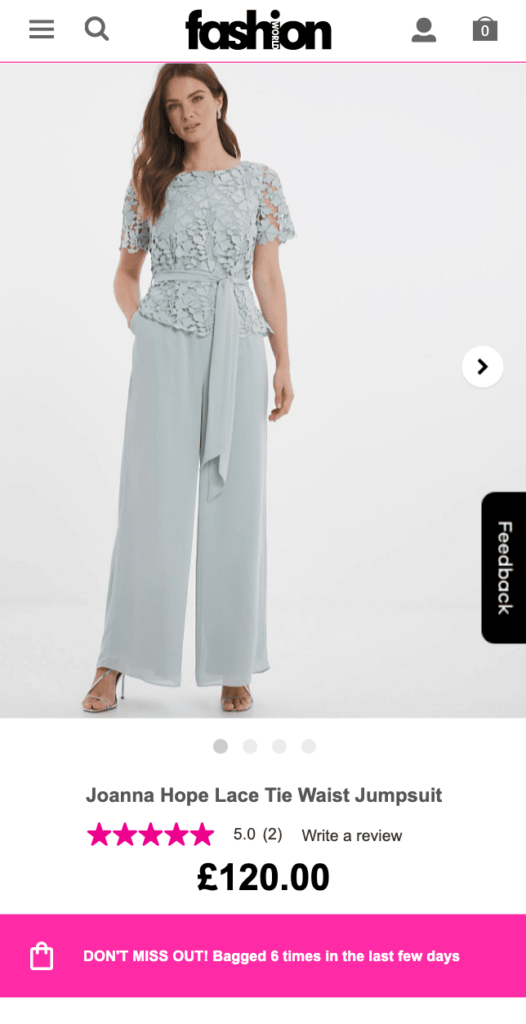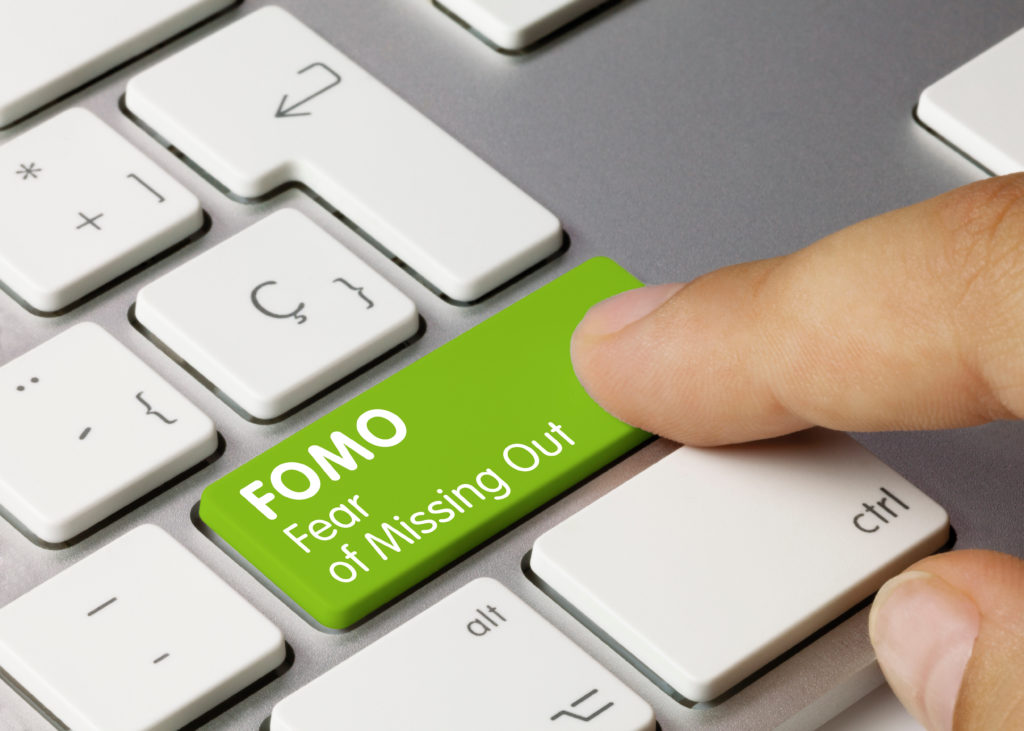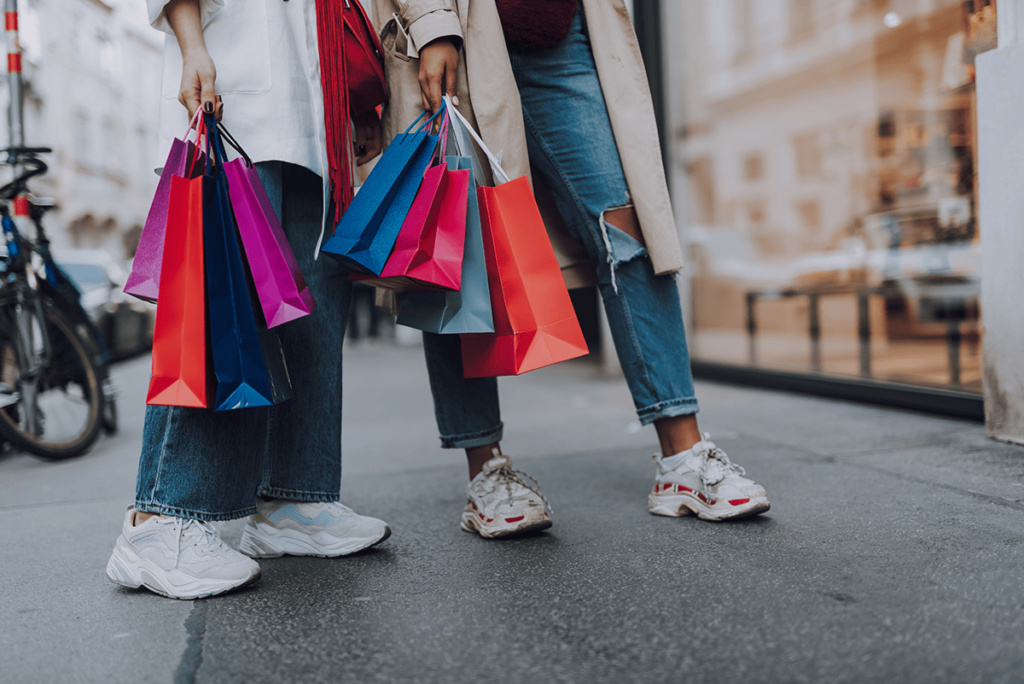Table of contents
What is FOMO?
FOMO stands for ‘fear of missing out’ and is a psychological phenomenon that is triggered when you feel like you may let an amazing opportunity pass you by. It is commonly associated with social media where you are presented with an item, event or destination that seems too good to miss.
Examples include:
- Wanting to get a ticket to Coachella because all your friends are going
- Seeing limited stock on the latest iPhone
- Seeing a countdown on the latest sale for your favourite brand
- Wanting to book a flight because the tickets are half price
This sense of loss aversion was popularised by author Patrick J. McGinnis in 2004 and recent statistics highlight the effect this has on purchasing behaviours:
- 60% of millennial consumers said they make a reactive purchase after experiencing FOMO, most often within 24 hour
- Nearly 7 in 10 (69%) of millennials experience FOMO, the most of any age group
[source: Optinmonster]
What is FOMO in eCommerce?
FOMO in eCommerce, and in a wider marketing context, comes in many forms and is used to increase online Conversion Rates and help shoppers make more informed buying decisions. Examples include:
- Urgency messages
- Scarcity messages
- Popularity messages
- Trending messages
- Sales countdown
- Influencer marketing
- Trending messaging – i.e. herd mentality
- Email alerts for latest trends, offers etc
- Reviews / testimonials
- Stock quantity
- Exit overlays with discounts/coupons
- Exclusive online communities
- Sharing User Generated Content (UGC)
- Expiring content e.g. use of social Stories
- Early bird offers
- Event invites / at event engagement
It is vital that within a marketing and eCommerce context, FOMO is used responsibly. Responsible use of FOMO means being honest, using real-time shopper behavior and showing that your brand offers great products that customers love.
Examples of FOMO in eCommerce
Here we look at 10 examples of how you can introduce FOMO into your eCommerce strategy.
- Social proof messages: Social proof messages can be woven into your website, app, display ads, social media, email and even digital out of home advertisement. Using real-time data, brands can integrate these messages throughout the buying journey.
- Urgency Messaging: This example from FatFace combines two types of messaging, Review Messaging and Urgency Messaging. The latter focuses on ‘Don’t Miss Out!’ in combination with the number of purchases in the previous 48 hours. The time period can be altered as required (e.g. a shortened window during Black Friday sales periods)
- Scarcity Messaging: This example from T.K. Maxx drives both urgency and scarcity ny pulling in remaining stock levels. It is, quite literally, saying that shoppers are likely to miss out unless they act now:
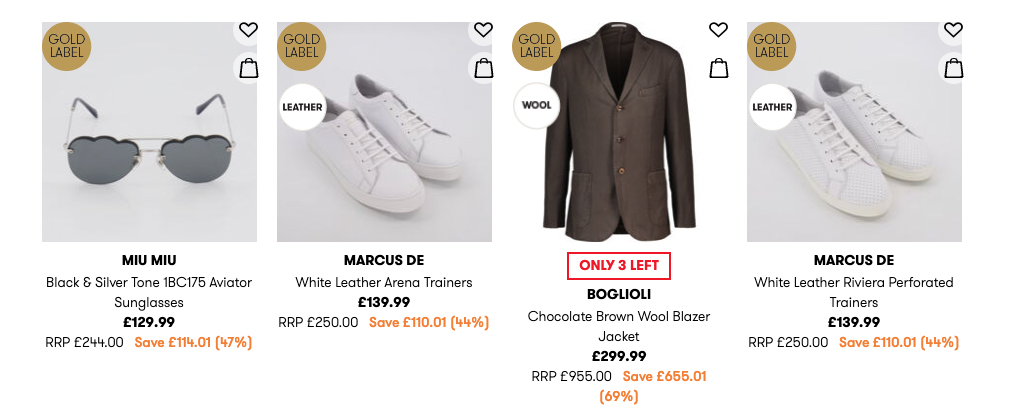
- Popularity Messaging: People looking at an item or the number of items sold is an example of ‘popularity’ messaging. This example from Argos combines both examples with current viewer figures and how many have been purchased in the last 24 hours. This plays on shoppers’ desire to be buying something that other people also like.
- Trending Messaging: This example from Very on their Product Listings Page (PLP) helps visitors quickly identify which products are trending as they scan the page
- Sales countdown: Limited time offers accompanied by a countdown help spur visitors into action. Victorian Plumbing have gone an extra step further by offering an additional discount code on top of the existing offer. Countdowns can be woven in to your website, app, display ads and even through to PPC ads.
- Influencer marketing: Influencer marketing in its simplest form involves sourcing celebrities or authoritative figures to talk about your product. This gives products the impression of exclusivity and allows shoppers to feel like they are part of the influencer’s tribe. Very takes influencer marketing one step further by working in collaboration with them to create exclusive clothing ranges such as this example with comedian Judi Love.
- Email alerts for latest trends, offers etc. : Email still remains one of the best channels for delivering ROI. It is unsurprising therefore that so many brands encourage visitors to their site to become a subscriber. Once signed up, emails can be targeted to individuals based on their previous shopping behaviour. This example from FatFace includes a limited time offer accompanied with personalized language “just for you!”. Customers who receive this may feel like they will miss out on a great opportunity that they alone have been chosen to receive.
- Stock availability: In addition to pulling stock quantity into social proof messages (scarcity messaging), having this clearly displayed on the Product Details Page acts as another trigger to shoppers to get their hands on the item while they can. This example from Indiska gives users an indication of how many of each size are left alongside an exclamation mark in a red circle to drive a greater sense of urgency to purchase
- Exit intent widgets: Triggering an exit intent widget as a user goes to leave the site is a great way to offer shoppers exclusive discounts if they join the community or the VIP club. Take a look at this example from New Look below
- Exclusive online communities: Creating a community of highly engaged followers can trigger FOMO in others. We don’t like to imagine that there is a great club that we are not part of. One way to create this feeling is to reshare a followers’ content for a ‘best photo of the week’ competition, which can encourage others to submit their photos. Other examples include loyalty reward programs and targeted offers to your most engaged shoppers as seen here from Revolution Beauty
- Sharing User Generated Content (UGC): As seen above, sharing User Generated Content can be extremely powerful as a sign of approval from that shopper as well as making them feel engaged with the brand. Wickes use this to great effect with their #WithWickes content which makes its followers feel like they also have to buy the products on display
- Limited Time Shipping Options: According to a Walker Sands survey, 90% of users stated that free shipping was the prime incentive in online shopping. In addition to ‘free shipping’ options for customers, brands may also offer next-day delivery to customers who order within a specific time frame as shown in this example from Boots
- Limited Edition: Crew Clothing have a dedicated section for their limited edition items and make it clear that they are not only limited but only available online. They’ve even made a point of creating FOMO with the flip on the saying “good things come to those who
waitclick”
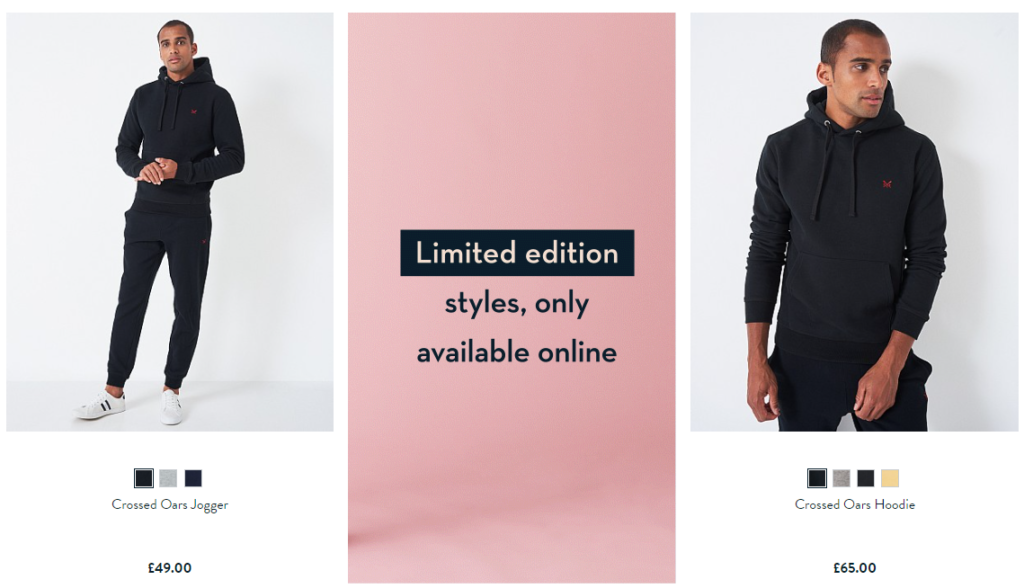
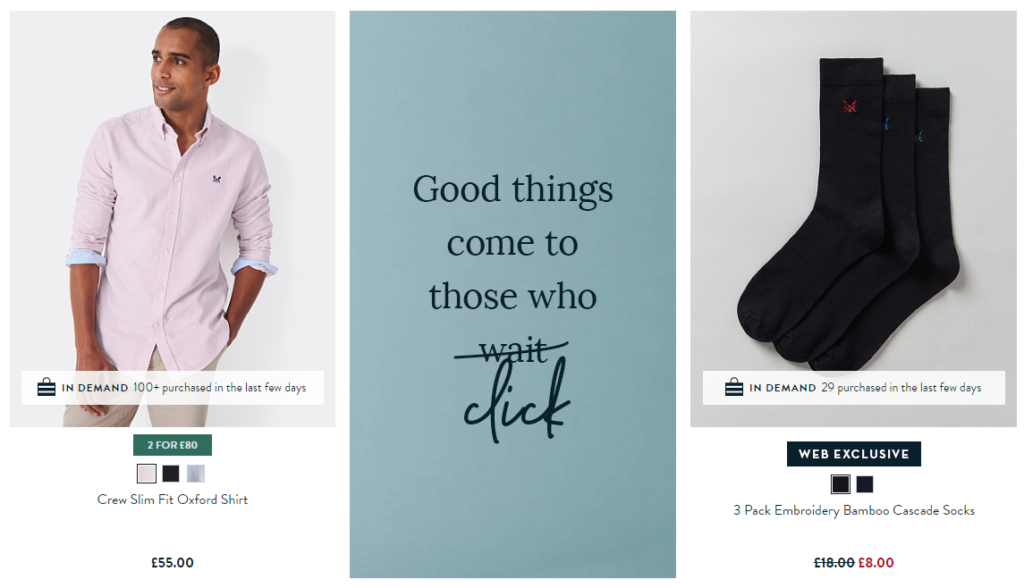
Success Stories using FOMO within Social Proof Messages
- FatFace recently added a mixture of social proof messages to the PLP including ‘Popular! X views’, ‘X purchased recently’ and ‘Trending now! X sold’ which led to an additional 5.01% uplift in conversion on top of the existing uplifts seen from PDP and Cart messaging. Read the full case study
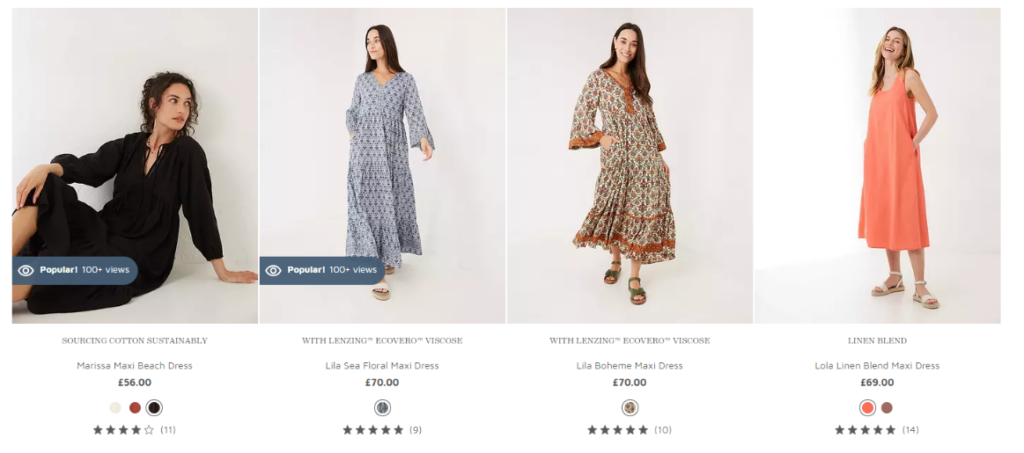
- ao.com ran a full-funnel social proof messaging implementation using 11 message types including “Great minds. Someone else bought x seconds ago” and “Really popular! X sold in the last few days”. After just 6 weeks this resulted in a 38.2X ROI. Stephanie Nash, Ecommerce Performance Manager at AO, said: “Having worked in ecommerce for a decade I’m rarely blown away by the technology on offer but with Taggstar, I was. I’d experimented with other social proof products but Taggstar has outshone them all. The technology is not only versatile, but it is also well suited to our needs thanks to the sheer breadth of message types, as well as the combination of messages on offer.” Read the full case study
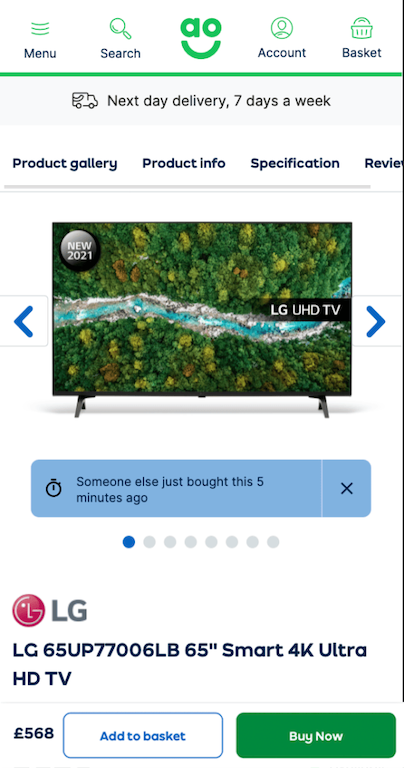
- Fashion World saw a 14.6% conversion rate uplift on mobile after redesigning the message position and design on the Product Details Page (PDP). This included the use of “Don’t Miss Out” urgency messaging and after just 20 days this led to an increase in mobile-only conversions of 14.6%. Read full case study
